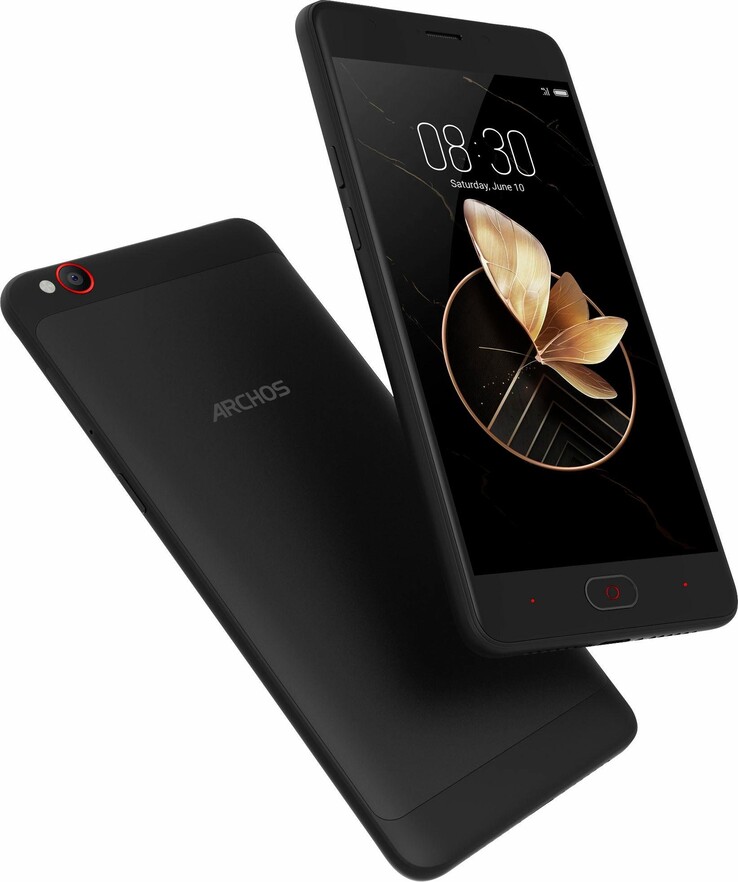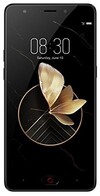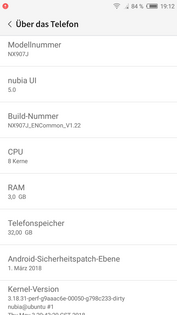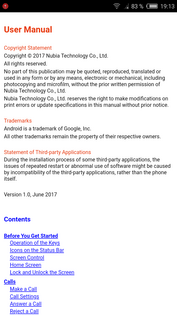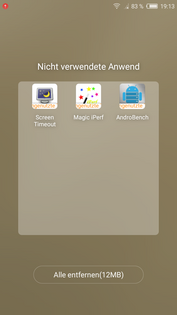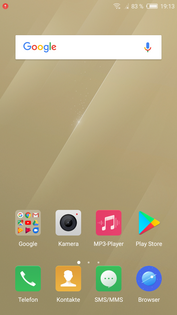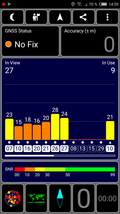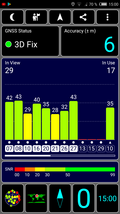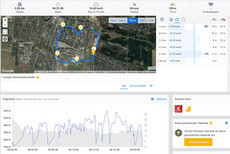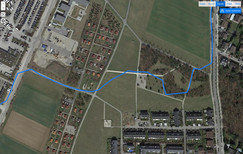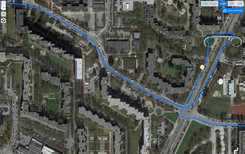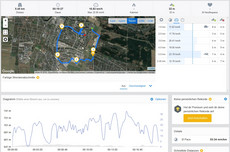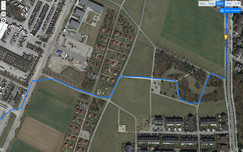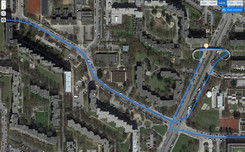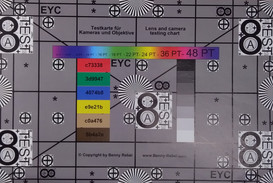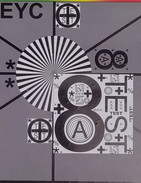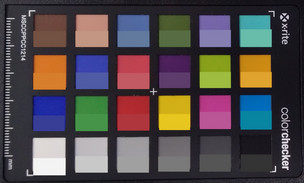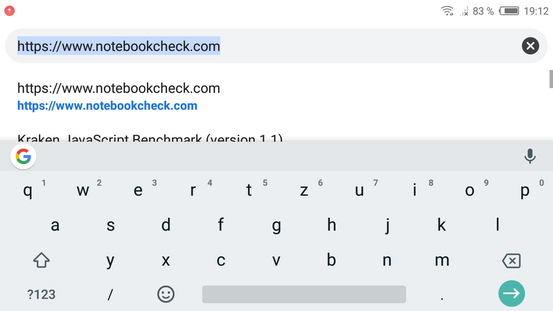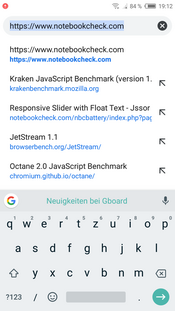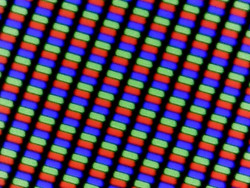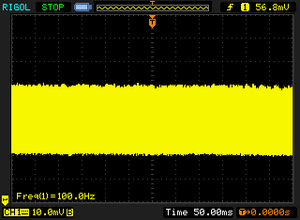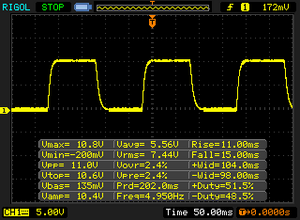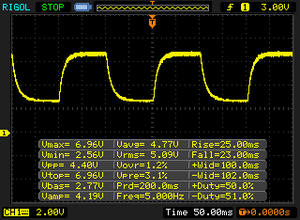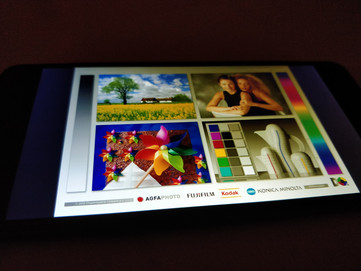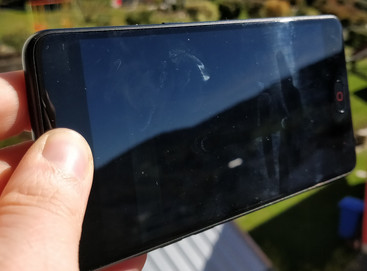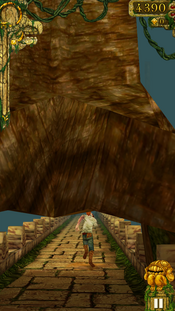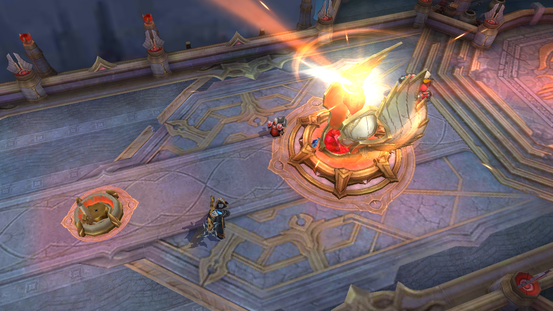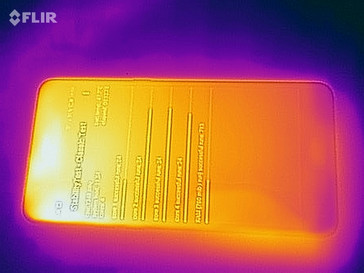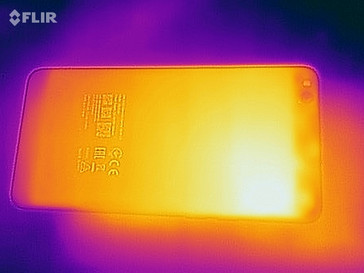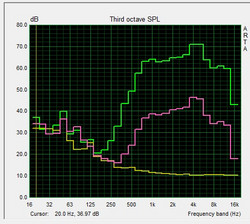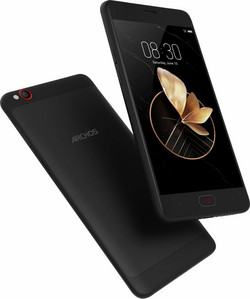Archos Diamond Gamma Smartphone Review
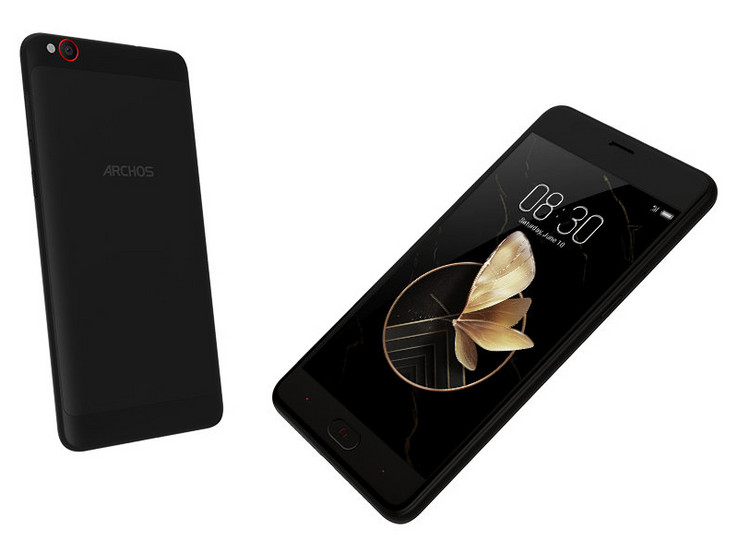
Archos has been more than a tablet and smartphone manufacturer for some time now: They currently also offer electric scooters and smart-home products. However, the Archos Diamond Gamma is a classic mid-range phone that can be purchased for a low price. The device does not originate from Archos but from ZTE, where it is known under the name Nubia M2 Play. The Archos Diamond Gamma is fully compatible with European LTE networks, making it an obviously superior choice in our region.
The Archos Diamond Gamma can be purchase for just short of 200 Euros (~$232), putting it in a price class that also encompasses devices such as the Honor 9 Lite, the Gigaset GS185 and the Motorola Moto G6.
Case – Plastic Case with red Accents
The straightforward plastic case of the Archos Diamond Gamma has red highlights, for example around the camera, which make the smartphone stand out to some extent. Otherwise, it is hard to distinguish when laid down next to other devices. Currently, the only available color variant is black; the case is matte on the back, although it is still not completely immune to fingerprints. The smartphone is a 1:1 copy of the ZTE Nubia M2 Play, which unlike the Archos Diamond Gamma, also comes in a white variant.
While, at 161 grams (~5.7 oz), it is not a super light device, it does have good handling. The smartphone is fairly robust; the only thing it does not handle well is pressure on the display.
Features – Archos Diamond Gamma with a suitable Amount of Storage Space
The Archos Diamond Gamma comes with 3 GB of RAM and 32 GB of mass storage, which is standard for this device range. The storage can be expanded with a microSD card, although in doing so, you sacrifice a SIM slot. The microSD card is recognized as an external memory card and apps cannot be transferred to it.
Software – Comprehensive, but dated
The smartphone uses the Android 7.1.1 based Nubia UI 5 as its operating system. However, even after two updates during testing, the security patches date back to March 1st 2018, making them already quite outdated at the time of testing. The manufacturer installs few additional apps, keeping the system rather slim. Infrequently used apps are grayed-out by the user interface or even put into a separate folder, at which point users may decide whether they want to delete or keep them.
It is possible to install multiple instances of apps, for example to manage two Facebook or WhatsApp accounts and to run multiple apps simultaneously on the smartphone in split-screen mode. There are numerous possibilities for gesture controls as well. The system is user-friendly overall and offers a lot in terms of settings.
Communication and GPS – Wi-Fi sluggish, GPS OK
The Archos Diamond Gamma supports the Wi-Fi standards 802.11 b/g/n, although the transfer speeds in our tests were abysmal. The device is also able to connect to LTE networks, but while it supports the most essential frequencies for Central Europe, those frequently traveling to more distant foreign countries will not get a lot of enjoyment out of the device, since their local LTE networks often use other frequencies that are not supported by the Archos phone. The LTE reception in the German D2 network is good, even inside of buildings.
| Networking | |
| iperf3 transmit AX12 | |
| Motorola Moto G6 | |
| Gigaset GS185 | |
| Honor 9 Lite | |
| Archos Diamond Gamma | |
| iperf3 receive AX12 | |
| Motorola Moto G6 | |
| Gigaset GS185 | |
| Honor 9 Lite | |
| Archos Diamond Gamma | |
Whereas the smartphone is unable to locate us inside of buildings with a concrete ceiling, its accuracy quickly increases to within 6 meters (~20 ft) outdoors.
The Archos Diamond Gamma shows precise locating capabilities in our real-world test. This consists of a bike ride on which we also take the professional navigation system with us. While it takes more shortcuts than the professional Garmin Edge 520, the overall course of the track remains accurate and it is, in part, possible to discern which side of the road we rode on. This is a good result, making the Archos Diamond Gamma recommendable for occasional everyday navigation tasks.
Telephony and Call Quality - Weak Microphone on the Diamond Gamma
The Nubia contacts app handles telephony on the smartphone. Unfortunately, the app requires location privileges to function, which is aggravating from a data conservation standpoint, particularly for a necessary and irreplaceable app.
The call quality is good when using headphones and a small amount of booming can only be heard at maximum volume. On speakerphone, the person on the other end of the line sounds rather thin. The microphone is not great regardless of whether you hold the phone up to your ear or use speakerphone: Our voice sounds dull and if you do not talk loudly enough, your conversational partner will not be able to hear you at all.
Cameras – Archos Phone Camera with good Color Accuracy and sharpness-lacking Areas
The 13 megapixels main camera only offers one lens, whereas most of the time, comparable smartphones have a secondary lens that is used to calculate depth of field effects. Since the quality of these effects can vary widely in this price range, this is not a big loss by itself. The general image quality is quite reasonable, even though some parts of objects lack sharpness and areas are represented rather inaccurately. That said, the color accuracy and dynamic range of very bright and very dark areas are fairly high. In low-light conditions, pictures unfortunately end up lacking sharpness and the brightening is mediocre as well.
1080p Video can be recorded at 30 FPS. Here, the exposure adjusts very quickly and smoothly to match the lighting conditions. The image quality is decent, although areas with significant image noise show up here as well.
The front camera has a maximum resolution of 5 megapixels, which no longer matches the current standard in its class; there are already dual-cameras and at least main lenses with a higher resolution by now. The image exposure is decent, but details tend to lack sharpness and areas have image noise in them as well.
Under controlled lighting conditions in the laboratory, the main camera shows a significant decrease in sharpness towards the edges. On top of that, the contrast ratio is too low and the outline of font becomes frayed. The color accuracy, while slightly too dark, is good.
Accessories and Warranty - The Usual
Aside from a USB cable and the charger, the package also includes a SIM tool that is used to open the SIM tray.
Archos offers a 24-month warranty period for their smartphones. Please see our Guarantees, Return policies and Warranties FAQ for country-specific information.
Input Devices & Handling – Good Touchscreen, good Fingerprint sensor
Operating the touchscreen feels smooth, it is sensitive all the way towards the edges and it has a surface with good gliding properties. The fact that the quick settings menu is accessed by swiping up from the bottom of the display is unusual, but something you will grow accustomed to, quickly.
Below the display, three touch buttons can be used to navigate the menus. They are labeled with red markings. The button in the middle acts as both a home button and a fingerprint scanner, which is reliable in its function to wake up the device from standby in a rather short amount of time.
Display – Dark, but good content representation
For its smartphone, Archos promises a brightness of 320 cd/m² and following our own testing, we can confirm this statement. However, this still makes the smartphone significantly darker than many comparable devices, since at 622 cd/m², the Honor 9 Lite is almost twice as bright. At 89%, the Archos Diamond Gamma's distribution of brightness is rather precise, which causes even larger color areas to appear homogeneous.
| |||||||||||||||||||||||||
Brightness Distribution: 89 %
Center on Battery: 310 cd/m²
Contrast: 1348:1 (Black: 0.23 cd/m²)
ΔE ColorChecker Calman: 6.51 | ∀{0.5-29.43 Ø4.77}
ΔE Greyscale Calman: 5.6 | ∀{0.09-98 Ø5}
92.8% sRGB (Calman 2D)
Gamma: 2.903
CCT: 7498 K
| Archos Diamond Gamma IPS, 1280x720, 5.5" | Motorola Moto G6 IPS, 2160x1080, 5.7" | Honor 9 Lite IPS, 2160x1080, 5.7" | Gigaset GS185 IPS, 1440x720, 5.5" | |
|---|---|---|---|---|
| Screen | 12% | 25% | -23% | |
| Brightness middle (cd/m²) | 310 | 488 57% | 627 102% | 426 37% |
| Brightness (cd/m²) | 313 | 478 53% | 622 99% | 412 32% |
| Brightness Distribution (%) | 89 | 95 7% | 82 -8% | 86 -3% |
| Black Level * (cd/m²) | 0.23 | 0.42 -83% | 0.41 -78% | 0.7 -204% |
| Contrast (:1) | 1348 | 1162 -14% | 1529 13% | 609 -55% |
| Colorchecker dE 2000 * | 6.51 | 3.9 40% | 4.5 31% | 5.3 19% |
| Colorchecker dE 2000 max. * | 10.21 | 6.8 33% | 7 31% | 10.2 -0% |
| Greyscale dE 2000 * | 5.6 | 5.3 5% | 5.1 9% | 6.3 -13% |
| Gamma | 2.903 76% | 2.41 91% | 2.26 97% | 2.4 92% |
| CCT | 7498 87% | 7146 91% | 7201 90% | 8073 81% |
* ... smaller is better
Screen Flickering / PWM (Pulse-Width Modulation)
| Screen flickering / PWM detected | 100 Hz | ≤ 10 % brightness setting | |
The display backlight flickers at 100 Hz (worst case, e.g., utilizing PWM) Flickering detected at a brightness setting of 10 % and below. There should be no flickering or PWM above this brightness setting. The frequency of 100 Hz is very low, so the flickering may cause eyestrain and headaches after extended use. In comparison: 53 % of all tested devices do not use PWM to dim the display. If PWM was detected, an average of 8081 (minimum: 5 - maximum: 343500) Hz was measured. | |||
The black value of 0.23 cd/m², which is to say the brightness of black areas at maximum brightness, is good since it is quite low. This leads to a good contrast ratio of 1,348:1 as well.
We take an even closer look at the depiction accuracy of the display by using a spectrophotometer and the software CalMAN. Grayscales are displayed very inaccurately and at an average color difference value of 6.51, the color representation deviates significantly compared to the reference color space sRGB.
Display Response Times
| ↔ Response Time Black to White | ||
|---|---|---|
| 26 ms ... rise ↗ and fall ↘ combined | ↗ 11 ms rise | |
| ↘ 15 ms fall | ||
| The screen shows relatively slow response rates in our tests and may be too slow for gamers. In comparison, all tested devices range from 0.1 (minimum) to 240 (maximum) ms. » 61 % of all devices are better. This means that the measured response time is worse than the average of all tested devices (20.2 ms). | ||
| ↔ Response Time 50% Grey to 80% Grey | ||
| 48 ms ... rise ↗ and fall ↘ combined | ↗ 25 ms rise | |
| ↘ 23 ms fall | ||
| The screen shows slow response rates in our tests and will be unsatisfactory for gamers. In comparison, all tested devices range from 0.165 (minimum) to 636 (maximum) ms. » 82 % of all devices are better. This means that the measured response time is worse than the average of all tested devices (31.6 ms). | ||
When looking at the display from sharp angles, distinct changes in color and brightness can be observed, although they remain within reason. Outdoors, the rather dark display struggles in direct sunlight, even at maximum brightness, though the Archos Diamond Gamma can be used in the shade.
Performance – Sufficient for day-to-day use
The Snapdragon 435 comes with 8 cores and a 1.4 GHz core clock. It is a popular mid-range SoC, although at the time of testing, its release already dates back 2.5 years. The Archos Diamond Gamma is unable to match the more modern Snapdragon 450 of the Motorola Moto G6 in our benchmarks; the Honor 9 Lite is significantly faster as well. While, the Archos Diamond Gamma offers slightly less performance overall than what could be expected in this price range, the power suffices for day-to-day use and we did not encounter stutters when navigating the menus during our tests.
The Adreno 505 serves as the graphics chip and does a better job of matching the competition than the processor part of the SoC.
| AnTuTu v6 - Total Score (sort by value) | |
| Archos Diamond Gamma | |
| Motorola Moto G6 | |
| Honor 9 Lite | |
| Gigaset GS185 | |
| Average Qualcomm Snapdragon 435 (42643 - 46814, n=11) | |
| AnTuTu v7 - Total Score (sort by value) | |
| Archos Diamond Gamma | |
| Motorola Moto G6 | |
| Honor 9 Lite | |
| Gigaset GS185 | |
| Average Qualcomm Snapdragon 435 (56672 - 59326, n=4) | |
| PCMark for Android | |
| Work performance score (sort by value) | |
| Archos Diamond Gamma | |
| Motorola Moto G6 | |
| Honor 9 Lite | |
| Gigaset GS185 | |
| Average Qualcomm Snapdragon 435 (4316 - 5438, n=10) | |
| Work 2.0 performance score (sort by value) | |
| Archos Diamond Gamma | |
| Motorola Moto G6 | |
| Honor 9 Lite | |
| Gigaset GS185 | |
| Average Qualcomm Snapdragon 435 (3538 - 3928, n=11) | |
| GFXBench 3.0 | |
| on screen Manhattan Onscreen OGL (sort by value) | |
| Archos Diamond Gamma | |
| Motorola Moto G6 | |
| Honor 9 Lite | |
| Gigaset GS185 | |
| Average Qualcomm Snapdragon 435 (4.5 - 16, n=11) | |
| Average of class Smartphone (18 - 166, n=155, last 2 years) | |
| 1920x1080 1080p Manhattan Offscreen (sort by value) | |
| Archos Diamond Gamma | |
| Motorola Moto G6 | |
| Honor 9 Lite | |
| Gigaset GS185 | |
| Average Qualcomm Snapdragon 435 (4.6 - 15, n=11) | |
| Average of class Smartphone (12 - 606, n=154, last 2 years) | |
| GFXBench 3.1 | |
| on screen Manhattan ES 3.1 Onscreen (sort by value) | |
| Archos Diamond Gamma | |
| Motorola Moto G6 | |
| Honor 9 Lite | |
| Average Qualcomm Snapdragon 435 (3.5 - 12, n=11) | |
| Average of class Smartphone (11 - 166, n=155, last 2 years) | |
| 1920x1080 Manhattan ES 3.1 Offscreen (sort by value) | |
| Archos Diamond Gamma | |
| Motorola Moto G6 | |
| Honor 9 Lite | |
| Average Qualcomm Snapdragon 435 (2.3 - 5, n=11) | |
| Average of class Smartphone (8.4 - 413, n=154, last 2 years) | |
Surfing the web on the Archos phone is not quite as fast as on similarly priced devices, images may occasionally take a while to load. The loading and waiting times on well-optimized web pages stay within reason however.
| JetStream 1.1 - Total Score | |
| Honor 9 Lite (Chrome 63) | |
| Motorola Moto G6 (Chrome 66) | |
| Average Qualcomm Snapdragon 435 (16.5 - 20.6, n=11) | |
| Archos Diamond Gamma (Chrome 69) | |
| Gigaset GS185 (Chrome 66) | |
| Octane V2 - Total Score | |
| Average of class Smartphone (2228 - 126661, n=194, last 2 years) | |
| Honor 9 Lite (Chrome 63) | |
| Motorola Moto G6 (Chrome 66) | |
| Archos Diamond Gamma (Chrome 69) | |
| Average Qualcomm Snapdragon 435 (2689 - 3314, n=11) | |
| Gigaset GS185 (Chrome 66) | |
| Mozilla Kraken 1.1 - Total | |
| Gigaset GS185 (Chrome 66) | |
| Archos Diamond Gamma (Chrome 69) | |
| Average Qualcomm Snapdragon 435 (11007 - 13586, n=11) | |
| Motorola Moto G6 (Chrome 66) | |
| Honor 9 Lite (Chrome 63) | |
| Average of class Smartphone (257 - 28190, n=154, last 2 years) | |
* ... smaller is better
We measured the microSD access times with our reference card Toshiba Exceria Pro M501. Here, the Archos Diamond Gamma achieves common results; the card is recognized without any issues, too. In terms of internal storage access times, it is on par with its class, even though other devices in the same price range have better random access times.
| Archos Diamond Gamma | Motorola Moto G6 | Honor 9 Lite | Gigaset GS185 | Average 32 GB eMMC Flash | Average of class Smartphone | |
|---|---|---|---|---|---|---|
| AndroBench 3-5 | 89% | 108% | -12% | 15% | 1496% | |
| Sequential Read 256KB (MB/s) | 276.5 | 238.2 -14% | 269.6 -2% | 275.7 0% | 242 ? -12% | 2235 ? 708% |
| Sequential Write 256KB (MB/s) | 117.2 | 117.2 0% | 138.2 18% | 45.54 -61% | 100.5 ? -14% | 1871 ? 1496% |
| Random Read 4KB (MB/s) | 27.7 | 69.9 152% | 68.4 147% | 31.71 14% | 43.1 ? 56% | 297 ? 972% |
| Random Write 4KB (MB/s) | 11.8 | 59.9 408% | 66.8 466% | 9.05 -23% | 22.3 ? 89% | 343 ? 2807% |
| Sequential Read 256KB SDCard (MB/s) | 84.3 ? | 75.3 ? -11% | 83.1 ? -1% | 84.3 ? 0% | 71.8 ? -15% | |
| Sequential Write 256KB SDCard (MB/s) | 61.4 ? | 61.5 ? 0% | 71.9 ? 17% | 59.7 ? -3% | 52.9 ? -14% |
Gaming – Gaming possible
The Archos Diamond Gamma lends itself well to playing games. The controls via touchscreen and gyroscope are very precise and the graphics chip supports many of the latest graphics interfaces. Only in more demanding games, such as Arena of Valor, can you expect stutters, particularly in the menu. The in-game performance at HD resolution and medium detail settings is good (a higher detail setting is not available on this smartphone). Although if you wish to always play the latest and greatest games and expect smooth frame rates even in demanding games such as PUBG Mobile, you will have to look elsewhere.
Emissions – Substantial heat development
Temperature
When the Archos Diamond Gamma is processing a high workload, it heats up quite a lot: We measure up to 47.5 °C (~117.5 °F) on the front and while this temperature decreases slightly towards the bottom of the case, the device is still warm here as well. The maximum temperature almost reaches critical levels and definitely feels uncomfortable. If you often use your smartphone for gaming or similarly taxing tasks, you should take that into consideration when deciding whether you want to put it into your pocket afterwards. We did not notice the rise in temperature during idle however.
(-) The maximum temperature on the upper side is 47.5 °C / 118 F, compared to the average of 35.2 °C / 95 F, ranging from 21.9 to 247 °C for the class Smartphone.
(±) The bottom heats up to a maximum of 44.8 °C / 113 F, compared to the average of 34 °C / 93 F
(+) In idle usage, the average temperature for the upper side is 29.9 °C / 86 F, compared to the device average of 32.9 °C / 91 F.
Speakers
The Archos Diamond Gamma possesses a mono speaker on the bottom edge, which, as usual in this class of devices, is unsuitable for prolonged music consumption. Of course, watching a quick YouTube video is possible, but a lack of bass and an exaggerated treble lead to a rather thin sound experience.
Audio output via the 3.5mm audio jack and Bluetooth on the other hand, work well and without any issues.
Archos Diamond Gamma audio analysis
(±) | speaker loudness is average but good (77.8 dB)
Bass 100 - 315 Hz
(-) | nearly no bass - on average 34.4% lower than median
(±) | linearity of bass is average (8.9% delta to prev. frequency)
Mids 400 - 2000 Hz
(±) | reduced mids - on average 5.9% lower than median
(±) | linearity of mids is average (8.6% delta to prev. frequency)
Highs 2 - 16 kHz
(±) | higher highs - on average 5.4% higher than median
(+) | highs are linear (5.4% delta to prev. frequency)
Overall 100 - 16.000 Hz
(±) | linearity of overall sound is average (28.9% difference to median)
Compared to same class
» 76% of all tested devices in this class were better, 3% similar, 21% worse
» The best had a delta of 11%, average was 35%, worst was 134%
Compared to all devices tested
» 86% of all tested devices were better, 2% similar, 11% worse
» The best had a delta of 4%, average was 24%, worst was 134%
Gigaset GS185 audio analysis
(±) | speaker loudness is average but good (80.4 dB)
Bass 100 - 315 Hz
(-) | nearly no bass - on average 25.1% lower than median
(+) | bass is linear (4.4% delta to prev. frequency)
Mids 400 - 2000 Hz
(+) | balanced mids - only 3.1% away from median
(±) | linearity of mids is average (7.2% delta to prev. frequency)
Highs 2 - 16 kHz
(±) | higher highs - on average 7.7% higher than median
(+) | highs are linear (6.6% delta to prev. frequency)
Overall 100 - 16.000 Hz
(±) | linearity of overall sound is average (25% difference to median)
Compared to same class
» 61% of all tested devices in this class were better, 7% similar, 32% worse
» The best had a delta of 11%, average was 35%, worst was 134%
Compared to all devices tested
» 76% of all tested devices were better, 5% similar, 19% worse
» The best had a delta of 4%, average was 24%, worst was 134%
Battery Life – Archos Diamond Gamma is a power hog
Energy consumption
In the class comparison, the Archos Diamond Gamma consumes a high amount of energy. During idle, it already requires 0.8 watts to keep the device up and running and in every scenario all the way up to a stress test, the energy consumption values exceed those of the other devices in the comparison. Usually, the SoC of the Archos smartphone is known for being rather economical in terms of energy consumption, but there are other outliers with the Snapdragon 435 as well, which likely means it requires good energy management by the manufacturer, which does not seem to be a given in this case.
| Off / Standby | |
| Idle | |
| Load |
|
Key:
min: | |
| Archos Diamond Gamma 3000 mAh | Motorola Moto G6 3000 mAh | Honor 9 Lite 3000 mAh | Gigaset GS185 4000 mAh | Average Qualcomm Snapdragon 435 | Average of class Smartphone | |
|---|---|---|---|---|---|---|
| Power Consumption | 49% | 40% | 47% | 19% | 18% | |
| Idle Minimum * (Watt) | 1.7 | 0.6 65% | 0.85 50% | 0.54 68% | 1.369 ? 19% | 0.847 ? 50% |
| Idle Average * (Watt) | 2.6 | 1.81 30% | 2 23% | 1.74 33% | 2.55 ? 2% | 1.446 ? 44% |
| Idle Maximum * (Watt) | 3.8 | 1.86 51% | 2.04 46% | 1.78 53% | 2.86 ? 25% | 1.63 ? 57% |
| Load Average * (Watt) | 6.3 | 2.78 56% | 3.23 49% | 3.55 44% | 4.38 ? 30% | 6.95 ? -10% |
| Load Maximum * (Watt) | 7.4 | 4.04 45% | 4.93 33% | 4.66 37% | 5.95 ? 20% | 11.3 ? -53% |
* ... smaller is better
Battery Life
The Archos Diamond Gamma struggles with its 3,000 mAh battery, something that can be attributed to the high energy consumption rather than the capacity of the battery: Whereas 8:38 hours in our Wi-Fi test are acceptable in practice, it is significantly less than what similarly expensive devices with a large battery can offer. The Honor 9 Lite, for example, manages an hour more. The included charger fully charges the smartphone in about 2 hours.
| Archos Diamond Gamma 3000 mAh | Motorola Moto G6 3000 mAh | Honor 9 Lite 3000 mAh | Gigaset GS185 4000 mAh | |
|---|---|---|---|---|
| Battery runtime | 7% | 16% | 28% | |
| WiFi v1.3 (h) | 8.6 | 9.2 7% | 10 16% | 11 28% |
| Reader / Idle (h) | 19.5 | 16.1 | ||
| H.264 (h) | 10 | 10.4 | ||
| Load (h) | 5.6 | 4.2 |
Pros
Cons
Verdict – Viable, but no Highlight
The Archos Diamond Gamma is a ZTE Nubia M2 Play clone and, in many respects, a sound smartphone: It has good performance values for its class, the color accuracy of the cameras is solid, the GPS is fairly precise and it has good handling. That said, it lacks real highlights compared to other smartphones in this price class, which offer significantly more: Software that is more up-to-date, better cameras as well as a longer battery life. You will also have to come to terms with the rather dark display, which makes outdoor use difficult.
All in all, the Archos Diamond Gamma offers a decent user experience, but it suffers from poor battery life and a dark display.
While the Archos Diamond Gamma is not a bad buy per se, it might be worth looking at a few alternatives first.
Archos Diamond Gamma
- 10/06/2018 v6 (old)
Florian Wimmer


